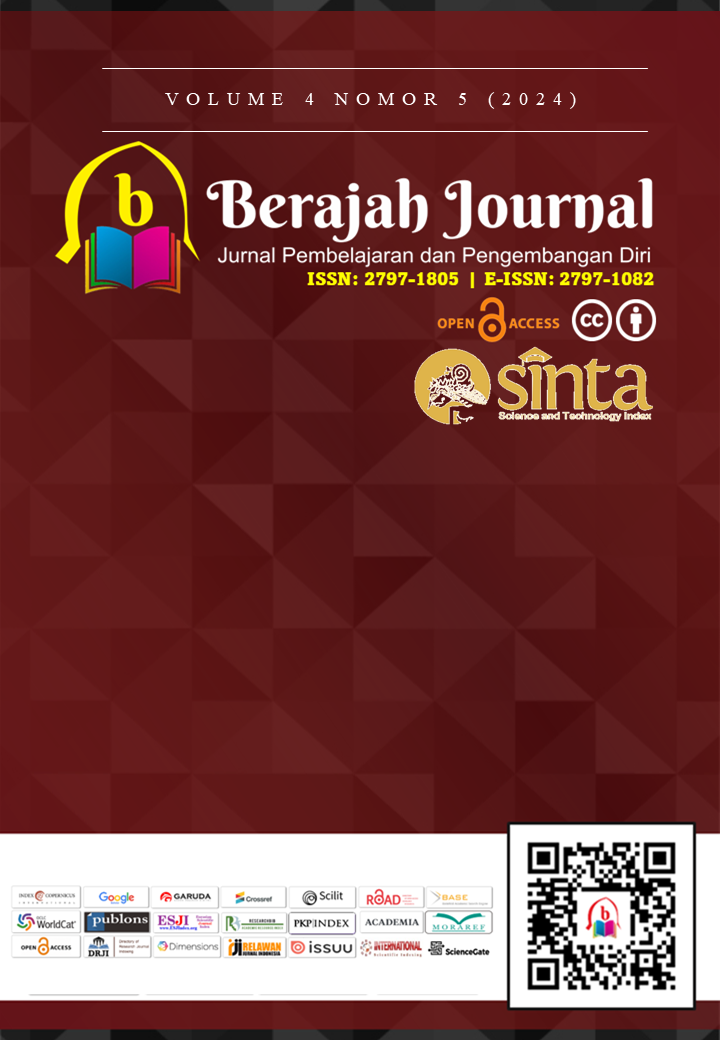INNOVATIVE APPROACHES IN MATHEMATICS EDUCATION: ENHANCING STUDENT UNDERSTANDING AND ENGAGEMENT
DOI:
https://doi.org/10.47353/bj.v4i5.426Keywords:
Mathematics Education, Active Learning, Technology in Math, Differentiated Instruction, Student EngagementAbstract
Mathematics education has long been a subject of interest due to its critical role in developing logical thinking and problem-solving skills. Despite its importance, many students struggle to grasp mathematical concepts, leading to widespread math anxiety and disengagement. This paper explores innovative teaching approaches that can improve student understanding and foster engagement in mathematics. Through the integration of technology, active learning strategies, and contextualized problem-solving, educators can create a more interactive and meaningful learning environment. Additionally, differentiated instruction and collaborative learning are identified as key methods to cater to diverse student needs. The research highlights how these strategies have positively impacted student achievement and attitudes toward mathematics. This paper aims to provide a comprehensive overview of effective methods in mathematics education that can be adopted by educators to enhance both teaching and learning outcomes.
Downloads
References
Boaler, J. (2016). Mathematical Mindsets: Unleashing Students' Potential through Creative Math, Inspiring Messages and Innovative Teaching. Jossey-Bass.
Dweck, C. S. (2006). Mindset: The New Psychology of Success. Random House.
Hattie, J. (2009). Visible Learning: A Synthesis of Over 800 Meta-Analyses Relating to Achievement. Routledge.
Jonassen, D. H. (2011). Learning to Solve Problems: A Handbook for Designing Problem-Solving Learning Environments. Routledge.
Koehler, M. J., & Mishra, P. (2009). What is technological pedagogical content knowledge (TPACK)? Contemporary Issues in Technology and Teacher Education, 9(1), 60-70.
Ladson-Billings, G. (1995). But that's just good teaching! The case for culturally relevant pedagogy. Theory into Practice, 34(3), 159-165.
Leinhardt, G., & Steele, M. D. (2005). Seeing the complexity of standing to the side: Instructional dialogues. Cognition and Instruction, 23(1), 87-135.
National Council of Teachers of Mathematics (NCTM). (2000). Principles and Standards for School Mathematics. NCTM.
Roschelle, J., Pea, R., Hoadley, C., Gordin, D., & Means, B. (2000). Changing how and what children learn in school with computer-based technologies. The Future of Children, 10(2), 76-101.
Schoenfeld, A. H. (2013). Reflections on Problem Solving Theory and Practice. The Mathematics Enthusiast, 10(1&2), 9-34.
Shulman, L. S. (1986). Those who understand: Knowledge growth in teaching. Educational Researcher, 15(2), 4-14.
Slavin, R. E. (2014). Educational Psychology: Theory and Practice. Pearson.
Smith, M. S., & Stein, M. K. (2018). 5 Practices for Orchestrating Productive Mathematics Discussions. National Council of Teachers of Mathematics.
Star, J. R., & Strickland, S. K. (2008). Learning to observe mathematics teaching: Developing preservice teachers’ professional vision. Journal of Mathematics Teacher Education, 11(2), 107-125.
Swan, M. (2005). Improving Learning in Mathematics: Challenges and Strategies. Department for Education and Skills Standards Unit.
Van de Walle, J. A., Karp, K. S., & Bay-Williams, J. M. (2013). Elementary and Middle School Mathematics: Teaching Developmentally. Pearson.
Vygotsky, L. S. (1978). Mind in Society: The Development of Higher Psychological Processes. Harvard University Press.
Watson, A., & Mason, J. (2006). Mathematics as a Constructive Activity: Learners Generating Examples. Routledge.
Wiggins, G., & McTighe, J. (2005). Understanding by Design. ASCD.
Zbiek, R. M., Heid, M. K., Blume, G. W., & Dick, T. P. (2007). Research on technology in mathematics education. In F. Lester (Ed.), Second Handbook of Research on Mathematics Teaching and Learning (pp. 1169-1207). Information Age Publishing.
Downloads
Published
How to Cite
Issue
Section
License
Copyright (c) 2024 Farid Imroatus Sholihah

This work is licensed under a Creative Commons Attribution 4.0 International License.




























